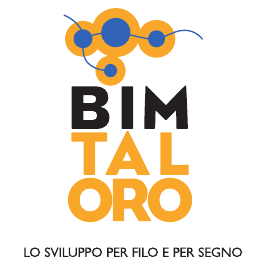Murales
Just like an open-air art gallery, the streets of Tonara are home to beautiful murals. The oldest work dates back to 1978, when the city council launched the first edition of the Festival of Torrone and Crafts. The event took place during the first ‘Peppinu Mereu’ cultural meeting, which celebrated 30 years of Sardinia being an autonomous region with a special statute. On that occasion, Siena artist Francesco Del Casino, who at the time was starting to decorate the walls of Orgosolo with his works of political and social commentary, made a mural dedicated to the Tonara poet along the main street. Unfortunately, it got lost with the passing of time, but a replica of it was made from old photographs in the Su Pranu district by Francesco Moretti and the students of his workshop.
Most paintings that can be seen today were made in the last few years by local, Italian and international artists (or even students) for specific projects or educational workshops. With their vibrant colours and powerful images, these murals brighten up the districts of the town and illustrate how the village’s heritage has survived throughout the ages, embracing the new, the foreign and the different with an open mind. Anyone visiting this picturesque mountain village will immediately have a glimpse of its culture and tradition. To this end, a detailed map of all the murals can be found on the municipality’s official Instagram account (@Comune_di_Tonara).
Many of the murals depict the landscape and the relationship between people and the environment: for example, Tonara’s skyline, with its colourful houses and typical districts, is painted on the Theatre walls (Piazza del Teatro Comunale, Francesco Moretti), along with the beautiful woodland surrounding the village, which has always played a key role in the village’s economic history for the production of timber, firewood, carved objects and building products (Piazza del Teatro, Jerico). Other works have been specifically dedicated to chestnut trees and chestnuts, which are considered the symbol of a habitat that old and new generations alike are committed to protecting and defending (Mural of via San Gabriele, made by the students of the “C. Contini” Art High School of Oristano).
Other paintings focus on local food and craft tradition: one is dedicated to torrone, rigorously made with top-quality nuts and honey, and therefore to walnut and hazelnut trees and industrious bees (via Monsignor Tore, wall of Latzarinu Park, Libera Capezzone); one showcases the craftsmanship of local cowbell manufacturers (Scalette Sant’Antonio, Mauro Patta); another one depicts other local century-old activities, such as wool weaving and traditional clothes (via Monsignor Tore-via Municipio, Mario Patta).
Of particular interest are the murals made in honour of the poet Peppinu Mereu. Whether depicted alone or with some of his most famous verses, the mural features different scenes from his short, yet extraordinary life: sometimes he is a dishevelled, anguished rebel (via Dante, Luis Gomez); other times he is politically active and fighting for what he believes in (via Belvedere, Francesco Moretti and his students). There are also murals depicting his work, including the lyric poem Ninna nanna a s’infantinu, a heart-wrenching lullaby sang by a mother to her son about a forced relationship (Istraccu, piazza Grazia Deledda, Cristian Blanxer and Victor Garcia Delgado) and the ode A Tonara, where the poet celebrates the beauty of his hometown and of its women, who, dressed in their traditional clothes, look as magnificent as the Madonnas painted by Raphael (via and piazza Peppino Mereu, Mauro Patta). The writer and the paintings inspired by his works are in perfect harmony with the other murals scattered across the village: particularly noteworthy are the portrait of the Nigerian woman who arrived from Libya, depicted as a black Madonna holding a baby while wearing traditional Tonara clothes (via Monsignor Tore, Luis Morden Gore) and the giant portraits of people with tribal face paint who are looking to the future from the walls of the municipal library (piazza Sant’Antonio, Jorit Agoch and Leticia Mandragora).
Text by Cecilia Mariani
 BIM TALORO
BIM TALORO